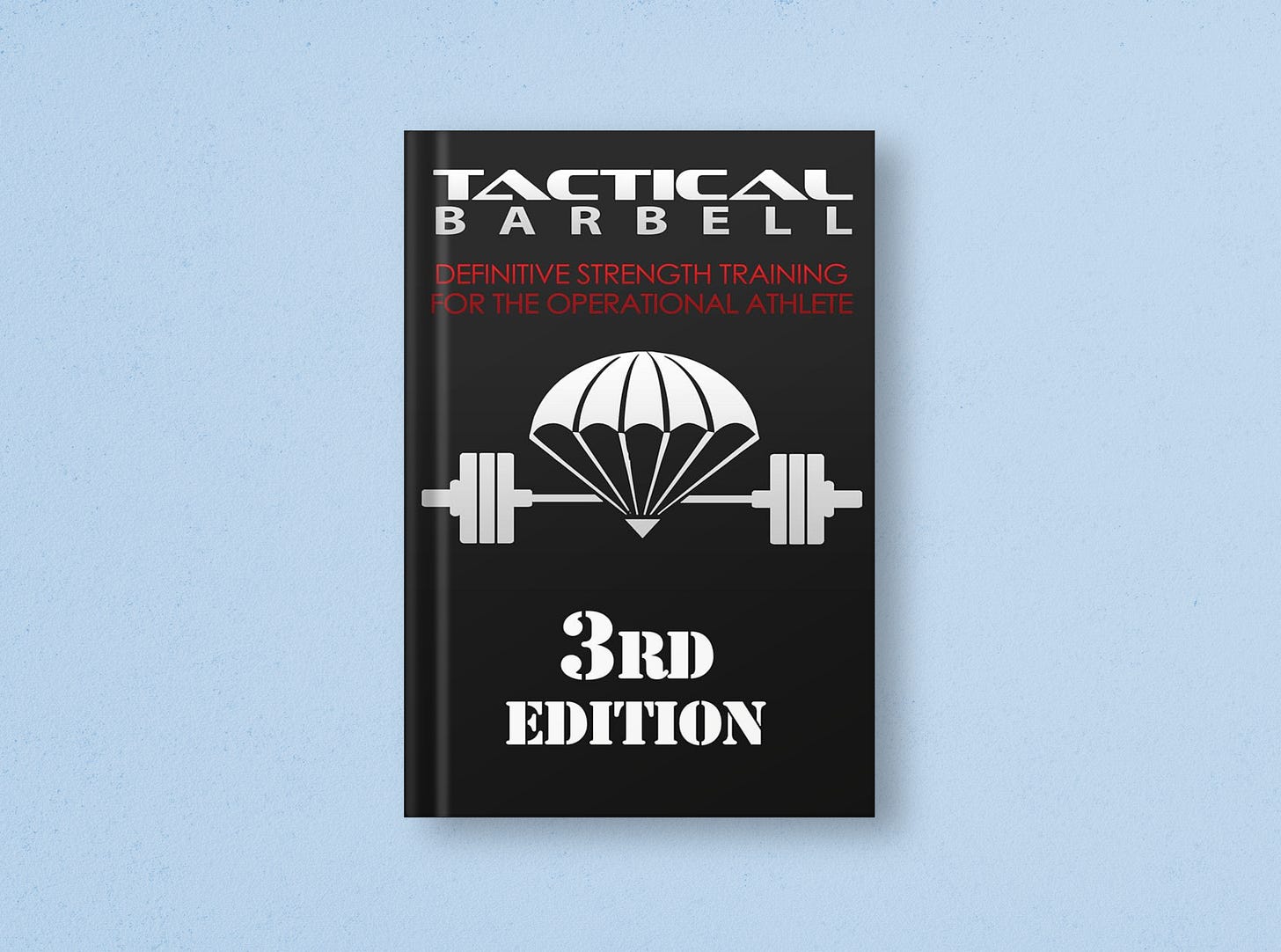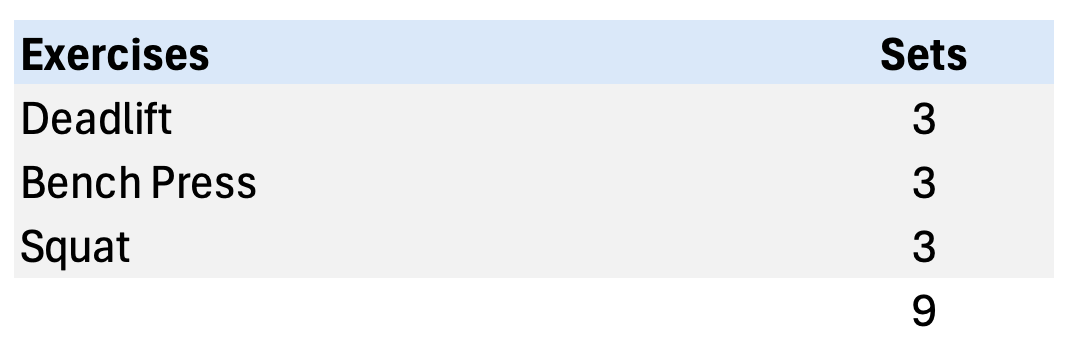If you’ve read my last book review (The Hybrid Athlete), you’d know that lately, I’ve been digging into resources on balancing multiple physical pursuits—particularly weightlifting and running, which I've found tricky to balance effectively. I recently picked up Tactical Barbell: Definitive Strength Training for the Operational Athlete by K. Black. The two books share a common goal: enabling progress across different fitness domains. But Tactical Barbell’s unique approach especially drew me in with its focus on accessibility, simplicity, and practicality, especially in demanding real-world contexts.
Structure and Approach
The audience of Tactical Barbell consists of operational athletes—military personnel, law enforcement, first responders—whose jobs require a blend of strength, endurance, and readiness for unpredictable situations. This focus sets it apart from most books geared solely toward muscle growth or aesthetics. Black recognizes that his readers have other demands on their time and energy, emphasizing "simplicity and sustainability" as foundational principles.
K. Black keeps things concise and to the point. Unlike many non-fiction books that stretch things out way past their useful length, Tactical Barbell delivers a well-rounded read, and few programs, in just around 150 pages. For me, this brevity is refreshing. Black tackles a wide range of material—from training goals to nutrition to program design—without unnecessary fluff. The book is ideal for readers who want to get in, grab what they need, and apply it immediately. Black’s references to scientific principles and experts in the field are thorough yet brief, encouraging readers to dive deeper on their own if they wish.
Training Philosophy and Real-World Application
One of the most valuable takeaways from Tactical Barbell is its grounding in scientific principles of strength training, like specificity. Black's program strips away non-essentials, encouraging athletes to focus on 2-5 core compound lifts performed regularly at high quality, but stopping short of failure. This approach not only stimulates strength gains but also minimizes fatigue, allowing time and energy for the athlete's other pursuits.
In many sports training guides, advice often hinges on the idea of pursuing a sport or training modality exclusively. Black’s approach challenges this by showing how strength work can coexist with—and even enhance—other physical goals when programmed wisely. The book prioritizes long-term sustainability, emphasizing strength while accepting the unavoidable trade-off of less hypertrophy, rather than promising you can have the best of both worlds.
Personal Experience
Reading Tactical Barbell right after The Hybrid Athlete, I can’t help but draw comparisons. The Hybrid Athlete addresses a similar challenge but leans toward volume and frequency, which I initially tried to incorporate into my own regimen. Yet, when balancing weightlifting with my running goals, this approach soon led to aches, pains, and the need for additional rest.
Black’s framework in Tactical Barbell felt different. Again, by accepting tradeoffs, I better understood how I could simplify my program to just 3-4 compound movements across 2-3 weekly sessions helped me stay consistent without overloading my body. By ruthlessly shifting focus away from hypertrophy and committing to minimalistic but frequent strength training, I should be able to maintain, and maybe grow, my strength while preparing for a half-marathon (which I recently signed up for). I now have extra time each week to dedicate to running, confident that I’m still building functional strength to support my goals.
For an example of what this might look like, here’s how I am planning to approach my training in the new year:
Current Plan vs. New Plan
One lifting session has been replaced with an extra run. One lifting session has been removed entirely in place of some extra rest and recovery.
More importantly though, the structure of each workout is considerably different. Below is what a current workout might look like, and what the new ones will look like on the right.
Old:
New:
By cutting out accessory lifts like tricep press-downs and increasing compound movements, we should be able to achieve three key goals:
Improve strength gains by increasing focus on strength-related training
Improve recovery by reducing the overall weekly volume
Include enough volume to maintain muscle size
Final Thoughts
So in the end, here is what Tactical Barbell gave me: it forced me to stop looking for compromises or loopholes in how I can get bigger, stronger and fitter at the same time. Instead, it convinced me to make clear priorities and make a plan that balances those priorities in an efficient manner. As a result, it actually gave me a sense of excitement for what I can achieve in this training block, rather than just trying to juggle the pursuits and stay afloat.
Of course, I’m yet to put this all into practice, and in the words of Mike Tyson “Everyone has a plan until they get punched in the mouth”. But at least I feel focused and ready to go.
If you yourself are trying to balance multiple physical pursuits or simply want a focused, strength-oriented program that doesn’t demand all of your time, Tactical Barbell might just be the guide you’re looking for.






